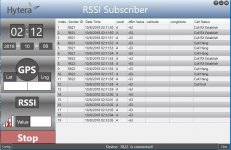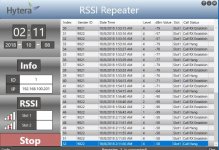Hi everybody.
I am wondering what everyone uses to produce heatmaps of signal strength for their clients ?
I think the answer is going to be fieldfox or anritsu, but I am looking for a more affordable option.
I work on mine sites, a couple of hours flight from our office, and often require signal surveys to be done as the pits get deeper, to ensure reliable comms.
the company wont buy a fieldfox, and if they did its highly unlikely the boss would want it out in the hot dusty environment of the mines.
does anybody have a cheaper option that will produce either a heatmap as an end product, or GPS location and RSSI as a CSV ? something affordable for a technician to buy on their own, that doesn't cost more than a new car ?
I have been looking at the new RF Explorer pro and signalhounds.
I do have a TinySA, so even if theres some software that can do the job, that would be great.
I am aware Motorola have their survey software, which would be perfect if I were on a Motorola site, but the sites I look after are running Hytera XPT, and I am unaware of any similar software for Hytera
Thank you in advance
I am wondering what everyone uses to produce heatmaps of signal strength for their clients ?
I think the answer is going to be fieldfox or anritsu, but I am looking for a more affordable option.
I work on mine sites, a couple of hours flight from our office, and often require signal surveys to be done as the pits get deeper, to ensure reliable comms.
the company wont buy a fieldfox, and if they did its highly unlikely the boss would want it out in the hot dusty environment of the mines.
does anybody have a cheaper option that will produce either a heatmap as an end product, or GPS location and RSSI as a CSV ? something affordable for a technician to buy on their own, that doesn't cost more than a new car ?
I have been looking at the new RF Explorer pro and signalhounds.
I do have a TinySA, so even if theres some software that can do the job, that would be great.
I am aware Motorola have their survey software, which would be perfect if I were on a Motorola site, but the sites I look after are running Hytera XPT, and I am unaware of any similar software for Hytera
Thank you in advance




